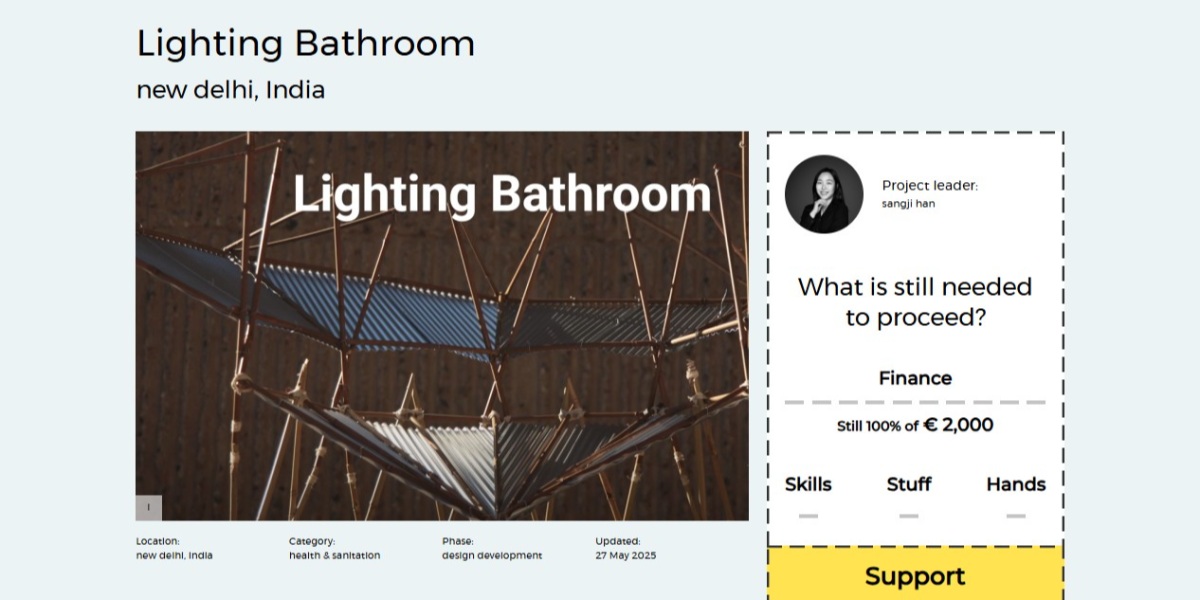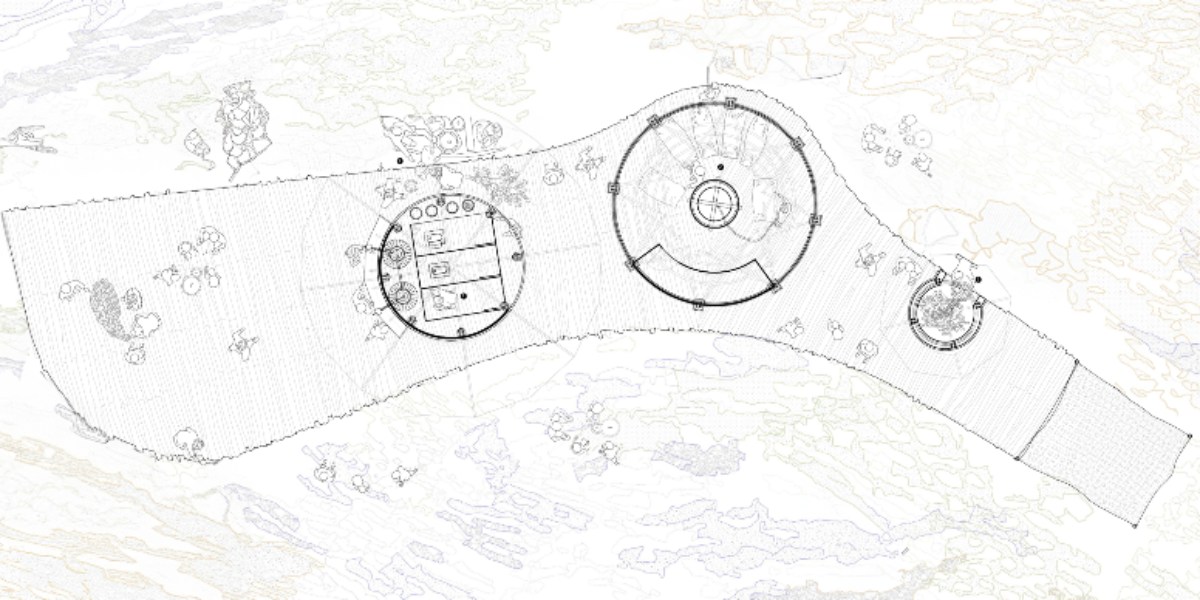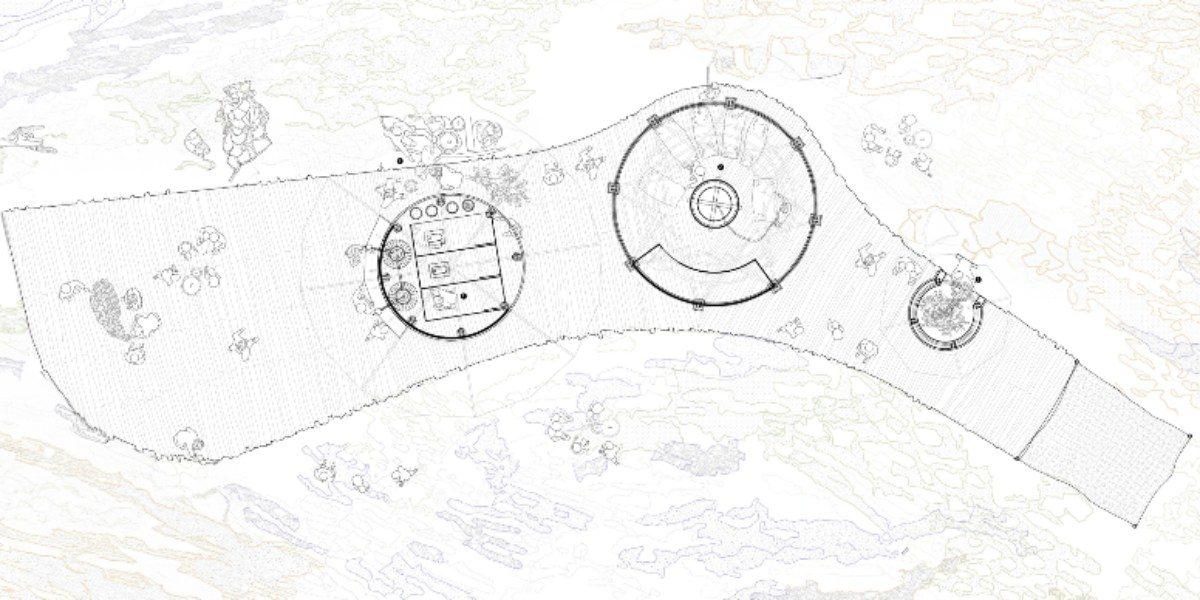New York, NY — Architect and urban innovator Sangji Han continues to gain recognition for her contributions to socially-driven design. Her latest project, Lighting Bathroom, was recently selected and published by What Design Can Do (WDCD) as part of the 2025 Make it Circular Challenge and was also featured on Architecture-in-Development (A–D)—two respected platforms that highlight innovation at the intersection of design and social change. The project was also awarded competitive funding from Yale’s Tsai Center for Innovative Thinking, further reinforcing Han’s influence across design, sustainability, and public health.
These acknowledgments follow a detailed selection process, reflecting not only the architectural quality of Han’s work but its broader societal impact—particularly in addressing infrastructure gaps in underserved communities.
A Design Solution for Dignity
Lighting Bathroom was developed from Han’s on-the-ground investigations into the daily challenges faced by women and children in informal settlements. In many of these communities, the lack of proper sanitation and nighttime lighting is not merely inconvenient—it can be hazardous. The absence of such basic infrastructure contributes to violence, reinforces social exclusion, and places significant strain on women and girls navigating daily life without safe public amenities.
Han’s solution is simple yet thoughtful: a community-owned pavilion that combines sanitary toilets with solar-powered lighting, made from local materials and employing low-tech building methods. The project is currently being prototyped in New Delhi, offering a functional space and a replicable framework for improving public safety, health, and empowerment.
“Lighting Bathroom is not just a facility,” Han notes, “It’s a model for community resilience, grounded in participatory design and cultural sensitivity.”
Watch the 1-minute pitch video that introduces the design and its social impact.
Selected for the Make it Circular Challenge Accelerator
In 2025, What Design Can Do (WDCD), a global organization focused on advancing climate-conscious innovation through design, launched its Make it Circular Challenge in collaboration with the IKEA Foundation and other strategic partners. The initiative attracted hundreds of submissions worldwide, with a focus on circular design models addressing global sustainability challenges.
Sangji Han’s project, Lighting Bathroom, was chosen as one of only 29 finalists to be published on the official WDCD Challenge platform after several rounds of application review and interviews. Although it was not one of the eight projects selected for the accelerator program, being included among the 29 published entries is a notable recognition, enhancing Han’s international visibility as a designer engaged in social issues.
The finalists were chosen for their potential to inspire circular innovation and demonstrate scalable social and environmental impact. Han’s project met these criteria, distinguishing itself among many others for its practical approach to accessible public infrastructure.
View the WDCD Accelerator publication and project proposal.
Architecture-in-Development Recognition

In addition to the WDCD recognition, Lighting Bathroom was featured by Architecture-in-Development (A–D), a platform that curates architectural responses to urgent social needs. Chosen as one of 39 projects out of more than 120 submissions, Han’s work was acknowledged for its “sensitivity to safety, dignity, and lighting in vulnerable urban environments.” Although it did not advance to the final round, the publication itself demonstrates the project’s merit and its inclusion in global discussions on inclusive urbanism.
View the project listing on A–D for detailed insights into its design phase, implementation in New Delhi, and long-term adaptability.
As noted by the platform, the 2025 selection was overseen by a panel of respected jurors, including David Basulto, founder of ArchDaily, and leading practitioners such as Al Borde Arquitectos, underscoring the significance of being featured.
Empowered by Yale’s Tsai CITY
Alongside her international recognitions, Sangji Han also secured competitive funding through Yale University’s Tsai Center for Innovative Thinking (Tsai CITY). She was awarded $2,000 through the Student Milestone Fund, a selective program that supports Yale students and alumni developing ventures with social and entrepreneurial impact.
The funding, granted in Spring 2025, directly contributed to advancing the next phase of the Lighting Bathroom prototype in New Delhi, India. In addition to financial support, Han gained access to startup resources, peer networks, and entrepreneurial tools through Tsai CITY—further strengthening her foundation for implementation and scaling.
The Milestone Fund supports only a limited number of student projects each semester, and applications are evaluated based on clarity of purpose, feasibility, and measurable impact. Han’s successful application highlights her growing reputation as not only a designer but also a leader in ventures focused on community wellbeing.
A Collaborative Vision

The success of Han’s work lies in its collaboration and local ownership. In both Benin and New Delhi, she has worked alongside grassroots studios and community leaders to ensure that the design is not imposed but co-created.
Working alongside project collaborator Tian Xu and local partner Studio Ant, the team has embedded the project into the community’s physical and social fabric—ensuring that the final result is not only functional but also empowering.
Lighting a Path Forward
Sangji Han is a designer and researcher based in New York, whose work focuses on equitable infrastructure, participatory design, and urban resilience.
Her recognition across multiple international platforms—both in design innovation and social entrepreneurship—positions her as a changemaker in the field of architecture, demonstrating how design can transform public space and support survival.
As Han continues to prototype, build, and scale Lighting Bathroom, she shows how socially responsive architecture can go beyond form to improve lives.

















